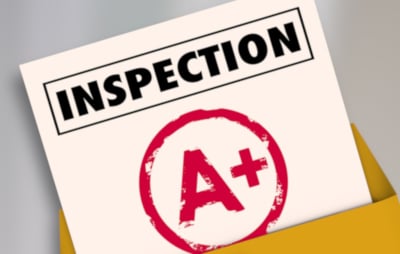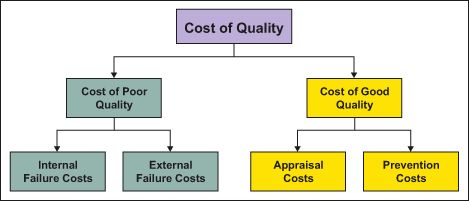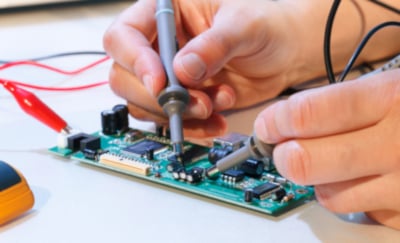 Quality control inspections undoubtedly come at a cost, both in time and money. And importers conscious of their QC budget often wonder what’s the best way to get their money’s worth out of inspections. Should you be inspecting more often? Less often?
Quality control inspections undoubtedly come at a cost, both in time and money. And importers conscious of their QC budget often wonder what’s the best way to get their money’s worth out of inspections. Should you be inspecting more often? Less often?
Unfortunately, there’s no clear “golden rule” for deciding inspection frequency for manufacturing, especially when you’re importing goods from abroad.
Every importer has different quality requirements which can affect inspection frequency. Depending on your priorities, you might:
- Inspect the same order multiple times throughout production
- Inspect some orders more frequently than others
- Inspect orders from some suppliers more than from other suppliers
With the proper balance, quality control inspections can help you proactively identify quality issues and prevent their reoccurrence (related: How Experienced Importers Limit Product Defects in 3 Stages [eBook]).
It’s ultimately up to you, the buyer, to determine how often you should inspect. But we’ll help you get started by introducing five key factors that can influence inspection frequency in manufacturing.
1. Your quality history with your supplier
Sourcing from multiple suppliers can help you hedge against any potential disruptions to your supply chain. And most importers have different relationships with each of their suppliers—some might be “tier 1 suppliers” they depend on regularly, while others might be secondary suppliers reserved for peak seasons.
Your relationship with each supplier should influence how often you inspect at their facilities. Allocate your QC resources to address the highest-risk suppliers.
Here are a few questions to consider to help you assess a particular supplier’s risk and choose an appropriate inspection frequency accordingly.
What results have you seen from previous inspections with the supplier?
Previous inspection results are one of the most important factors to consider when determining inspection frequency in manufacturing. Inspection results show the reality of production at a supplier’s facility more than any promise the supplier may have made during negotiations or annual visits.
Review your inspection reports and quality KPIs to determine: 
- Overall inspection results, including inspection pass/fail rate
- Number and type of quality issues found during inspection
- Any remedial actions the supplier took to address quality issues, such as product rework
- Adherence to production and shipping deadlines
If inspections for this supplier regularly reveal serious issues, adding follow-up inspections is generally a good idea to verify any corrective actions you expect the supplier to take. This is especially relevant if inspections “fail” due to the number of defects found exceeding the AQL tolerance.
You may want to arrange inspections earlier in the production process if the supplier has failed previous inspections performed closer to packing and shipping stages. A during production (DUPRO) inspection can help you to catch issues earlier upstream before they impact a wider quantity of the order.
In contact, you might consider cutting back the frequency of inspections if your supplier has passed several pre-shipment inspections with minimal quality issues found.
Just remember to closely monitor the quality of subsequent shipments received to ensure there isn’t a decline in quality in response to lower oversight.
How long have you worked with the supplier?
Expect a higher inspection frequency with new suppliers, as uncertainty and risk are higher for suppliers with no proven track record. These inspections early in the relationship will help solidify your supplier’s understanding of your expectations.
Suppliers you’ve worked with longer will typically have a better understanding of your quality standards and thus may not need as much outside QC oversight. You might want to lower the frequency of inspections for suppliers that consistently deliver acceptable quality.
But it’s dangerous to entirely eliminate outside inspections, even after working with a supplier for a long time.
Quality fade, a slow a nd gradual decline in product quality from a supplier over time, is a common phenomenon in China and elsewhere.
nd gradual decline in product quality from a supplier over time, is a common phenomenon in China and elsewhere.
Quality fade usually occurs when suppliers replace specified parts and materials with cheaper alternatives or otherwise “cut corners” in manufacturing. This helps them reduce costs and increase profit margins without raising the per-unit price you pay.
The danger is that you may not notice the decline until it impacts your customers because it tends to happen slowly over the course of several orders.
A third-party QC provider can help you periodically “check in” on long-term suppliers and report any cases of quality fade or other quality issues (related: 4 Keys to Smoothly Introduce Third-Party Inspection to Your Factory).
Does the supplier have an effective quality management system?
You’ll typically need to inspect orders less frequently for suppliers with effective internal quality controls. A robust quality management system helps suppliers manage product quality throughout production.
Suppliers can become certified in a relevant international standard called ISO 9001 to demonstrate their quality management expertise. An ISO 9001-certified supplier should have developed quality control processes for:
- Incoming quality control of raw materials from sub-suppliers
- In-line production quality control
- Finished product quality control
A quality audit based on the ISO 9001 standard can help you evaluate your supplier’s quality management system and determine whether they have processes in place to proactively identify and correct quality issues during production (related: Which Quality Audit Type Do You Need for Your Supplier).
2. The value of your product
The value of your product is another relevant factor to consider when determining inspection frequency in manufacturing. A cost-benefit analysis can help you weigh the cost of inspection, or forgoing inspection, against your product price point.
Most importers find the added assurance they get from at least one pre-shipment inspection is worth the upfront cost. The cost of product returns and rework in your home country for defective goods is often much higher than the cost of an inspection at your supplier’s facility and any subsequent corrective actions before shipping.
Inspection gives you the opportunity to find any issues before shipping so the factory can address them when it’s least costly to do so. The higher your product’s price point, the more money you risk losing by forgoing inspection.
Compare the cost of poor quality and good quality
Some importers mistakenly consider inspection a cost separate from other product concerns. But the cost of inspection should be directly compared to the cost of not inspecting—the cost of poor quality.
As shown in the chart above, inspection costs are sometimes known as “appraisal costs” in the quality control industry.
Inspecting more frequently will undoubtedly raise your appraisal costs. But could more frequent inspections also lower your cost of poor quality, such as product return costs or rework costs?
The cost of poor quality is lower for some products than others. And reducing inspection frequency for these products might make financial sense.
Imagine you’re sourcing a low-value product like disposable paper napkins. You likely don’t need to conduct a DUPRO and a pre-shipment inspection for this kind of single-use product. Instead, you may choose to rely on a pre-shipment inspection to verify the goods meet your specifications and there are no serious issues.
But what if you’re manufacturing headphones for professional audio and video production? A DUPRO inspection might make more financial sense given the higher price point for the product. The cost of poor quality would be greater, as quality issues would have a greater impact on the salability of the product.
And remember, you can always change inspection scope to meet your budget by adjusting the AQL sample size, rather than reducing inspection frequency. A smaller inspection scope won’t offer as much insight as a larger sample size. But it can still help to identify major quality issues before shipment.
3. The application of your product
How consumers use your product, your product’s intended application, can have a major impact on how frequently you should inspect the product. Riskier product types tend to demand more diligence when it comes to verifying quality requirements.
 For example, manufacturers in the aerospace and medical device industries sometimes inspect 100 percent of every order and use a zero-acceptance inspection plan. These products, by their nature, are high risk because of their application and the possibly fatal results that could occur if they’re defective.
For example, manufacturers in the aerospace and medical device industries sometimes inspect 100 percent of every order and use a zero-acceptance inspection plan. These products, by their nature, are high risk because of their application and the possibly fatal results that could occur if they’re defective.
Let’s look at some other risk factors that could affect your inspection frequency.
Product risk factors
Certain product risk factors warrant more diligence with inspection than you might otherwise think necessary. Some of the main questions to consider are:
- What mandatory regulations must your products meet? What are the consequences of noncompliance?
- What dangers does the product pose during regular use?
- What problems could arise with defective products?
For instance, a power bank may overheat or explode if faulty intelligent safety protections fail to protect against overvoltage. Or the power bank could damage other devices when charging, leading to a slew of customer complaints and claims (related: 5 Electronic Product Recalls That QC Inspection Could Have Prevented).
You’d probably want to inspect such a product more frequently to ensure it meets quality, safety and performance standards.
A lower-risk product like a promotional giftbag might not need frequent inspection. Customers are unlikely to use the product in any dangerous situations, and the product itself isn’t inherently dangerous.
4. The complexity of your product
The more complex your products, the more likely your supplier is to misinterpret requirements or make mistakes during production.
Pre-shipment inspection is essential to verify quality for complex products before it’s too late. Costs to rework or recall these products after shipping are generally far higher than the cost of pre-shipment inspection and corrective action.
The number of components in your product will largely determine its complexity.
Number of components
More components, especially moving parts, in a product tend to present more opportunities for quality issues. And quality issues caught earlier in production are generally easier to address than those discovered later.
An incoming quality control inspection, or pre-production inspection, helps you confirm any raw materials or components for your product before production actually starts (related: Don't Neglect Incoming Quality Control for Components and Materials).
 For instance, you might want to inspect the accuracy of the crystal oscillator in a consumer electronics product before product assembly. A defective crystal oscillator can impede Bluetooth connectivity and the accuracy of the device’s timekeeping mechanism.
For instance, you might want to inspect the accuracy of the crystal oscillator in a consumer electronics product before product assembly. A defective crystal oscillator can impede Bluetooth connectivity and the accuracy of the device’s timekeeping mechanism.
Disassembling products and replacing key components at the end of production is almost always costly and time-intensive. And if your components are particularly hard to procure, verifying them before production can help you avoid delays and limit procurement costs for replacement parts later.
5. Your customers’ tolerance for quality issues
Inconsistency between customer expectations and reality has destroyed many businesses.
For you to avoid a similar fate, the products you deliver must meet or exceed the standards you’ve marketed to your customers. And your customers’ quality expectations, whether high or low, should be a key consideration in how often you inspect the goods before shipping.
Have you marketed specific quality features? Does your company pride itself on a quality-oriented value proposition?
You might need to inspect more frequently to ensure your promises match the end product you ship. But not all importers market to the same customers. Let’s look at some of the ways your customer base can affect inspection frequency in manufacturing.
Consumers’ quality expectations
 You can gather customer feedback and expectations from many different sources. Learn about any issues you may need to urgently address by investigating the following:
You can gather customer feedback and expectations from many different sources. Learn about any issues you may need to urgently address by investigating the following:
- Product returns
- Customer complaints
- Online reviews
You can even survey your current customers to learn what level of quality they expect in your products.
Negative feedback may be the result of inadequate oversight at the production level. Consider increasing inspection frequency if your customers are complaining about quality issues you aren’t aware of in your products.
Always provide your suppliers and QC team with a QC checklist, product drawings and any other specifications to help them understand your customers too.
Retailer standards for supplied goods
Some retailers set specific QC requirements for goods and inspections that their suppliers must meet before they’ll accept a shipment. Such requirements should affect how frequently you inspect your goods before shipping. For example, some major retailers might:
- Set a specific AQL standard your goods must meet
- Require an independent third party to conduct inspections, rather than the factory’s or your own QC inspectors
If a retailer is pushing you to ship a certain order sooner than frequent inspections will allow, you may need to inspect less often than otherwise to avoid potential delays. Though with proper planning, you should be able to inspect as frequently as you feel is appropriate without delaying shipping.
Ecommerce platform quality requirements
Online ecommerce platforms like Amazon often set quality targets to ensure sellers meet standards and to protect customers from defective products. You might need to increase inspection frequency to ensure your business meets these standards.
Order defect rate is a common ecommerce quality target. Amazon sets an order defect rate of less than 1 percent, calculated from card chargebacks and 1- or 2-star ratings for its sellers. Amazon might even suspend your account if you fail to meet this target.
The cost of potentially losing your entire ecommerce business probably outweighs the cost of regularly inspecting your goods to assess compliance with standards. Consider increasing inspection frequency if your order defect rate is near or below the lowest acceptable rate.
Conclusion
Adjusting how often you inspect orders based on the above outlined factors may require some flexibility. Working with a QC company that doesn’t require a long-term contract may be an effective solution for you.
Such third parties can help you inspect whenever you need and typically won’t hold you to a specific inspection schedule or minimum volume over time. You can start and stop services as your inspection needs change.
Professional third-party QC providers can also provide you with multiple inspection options to best meet your inspection budget.
But don’t just sit back and relax between QC inspections. Establishing clear product specifications and QC checklists can help you avoid needing frequent inspections due to unclear specifications.
Sharing these checklists, drawings, specifications and defect tolerances with your supplier will help them meet your standards throughout production—even when you don’t inspect.
How do you determine inspection frequency in manufacturing? Share your experiences in the comment section below!







